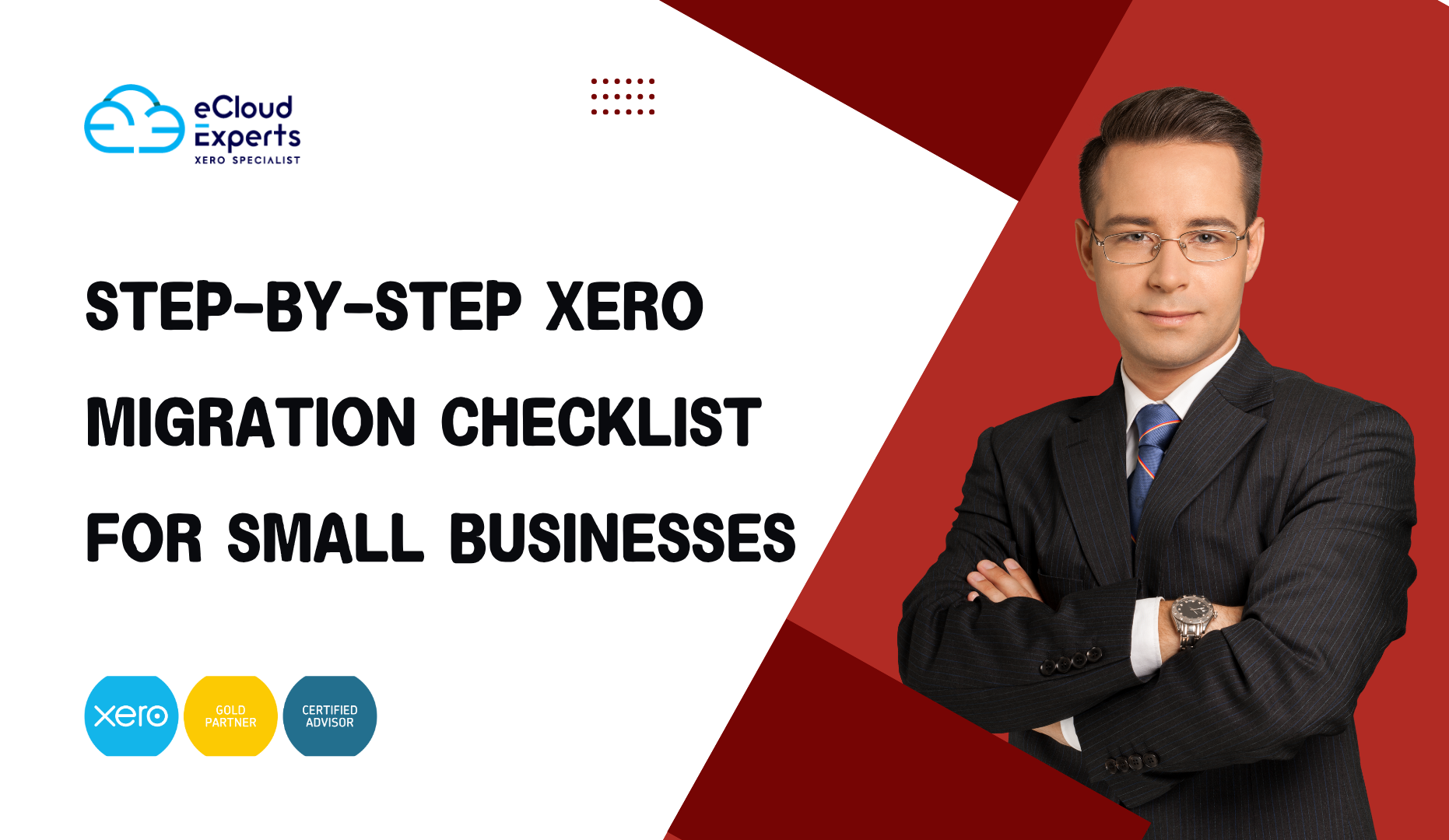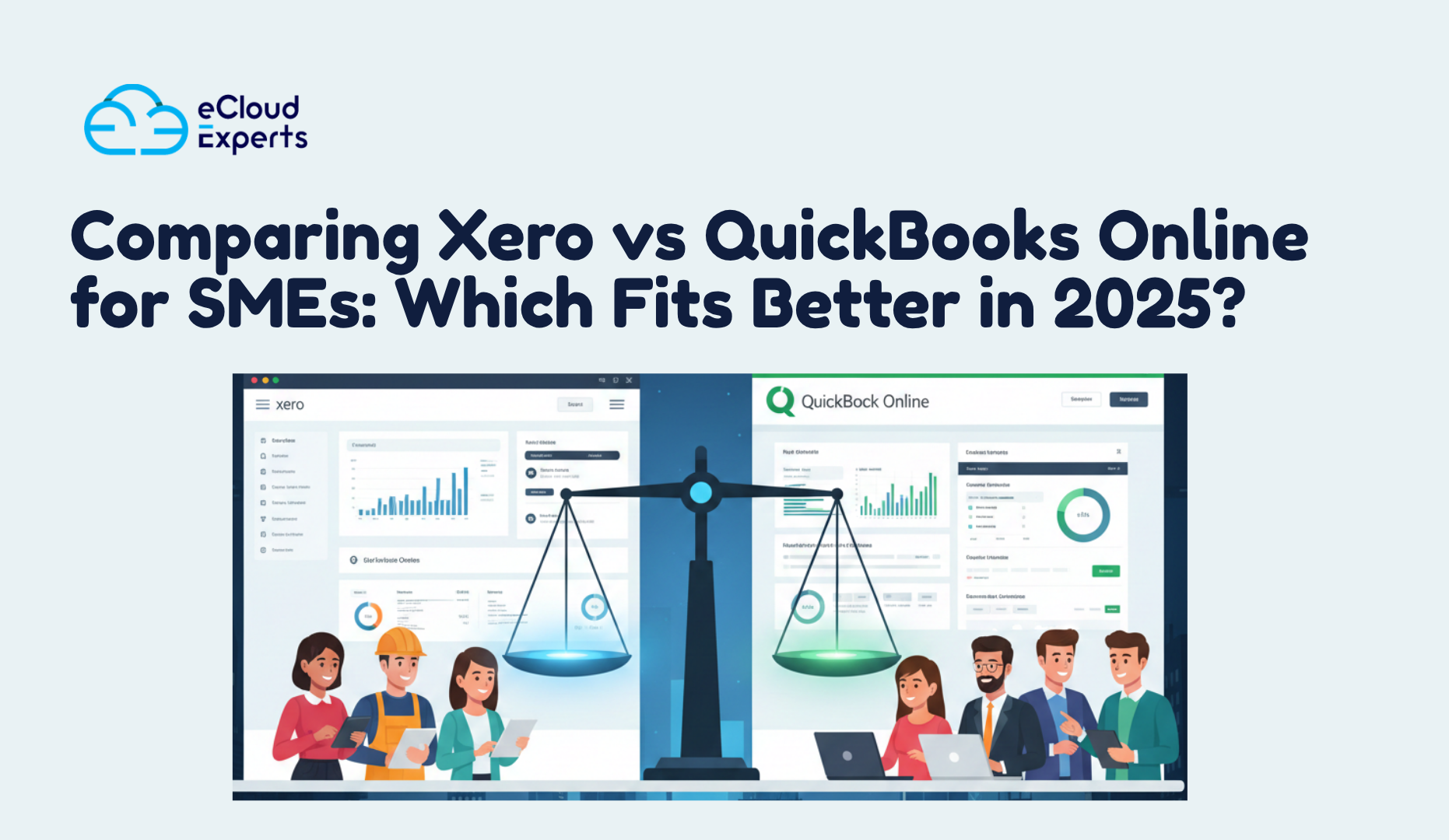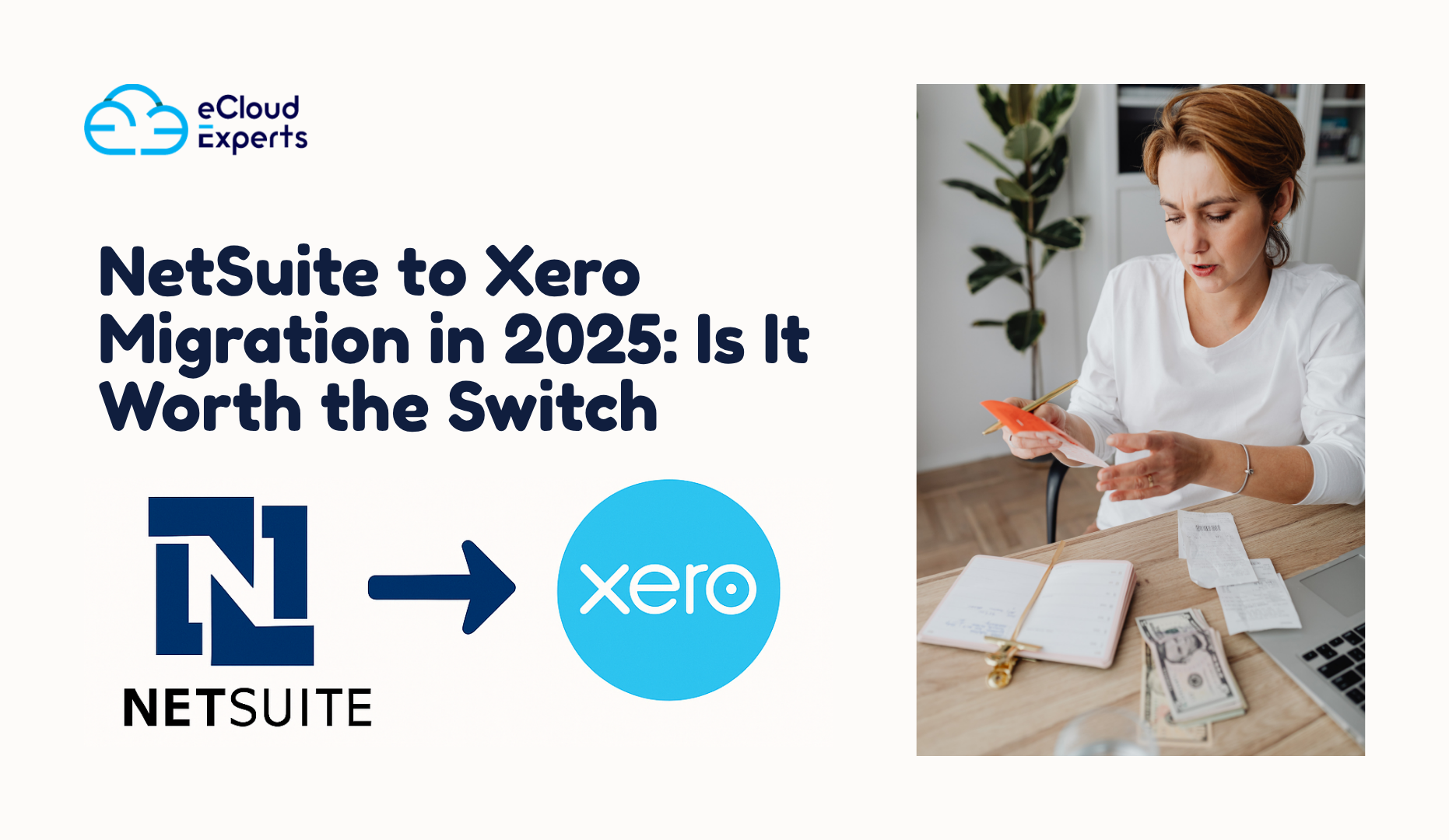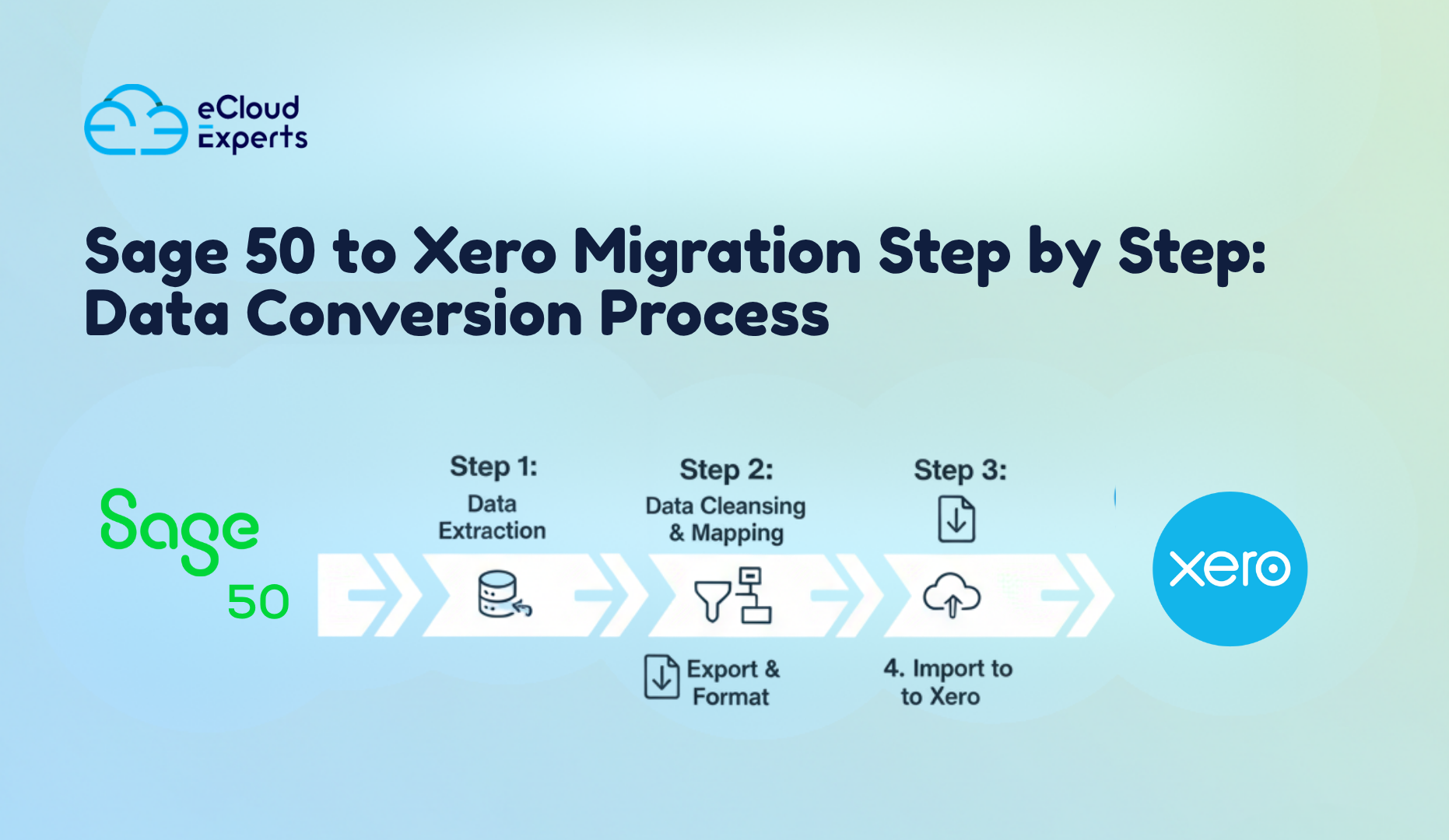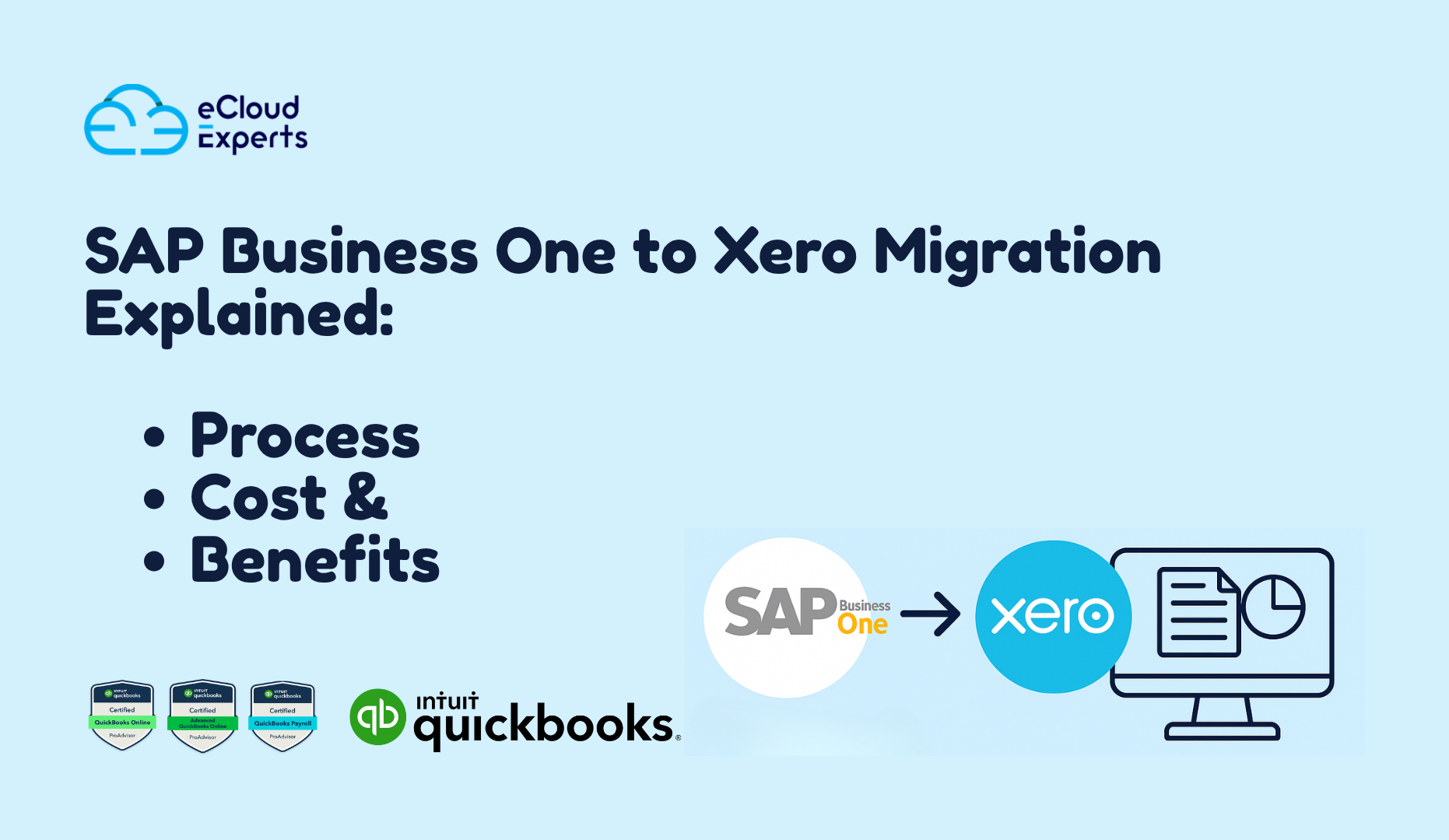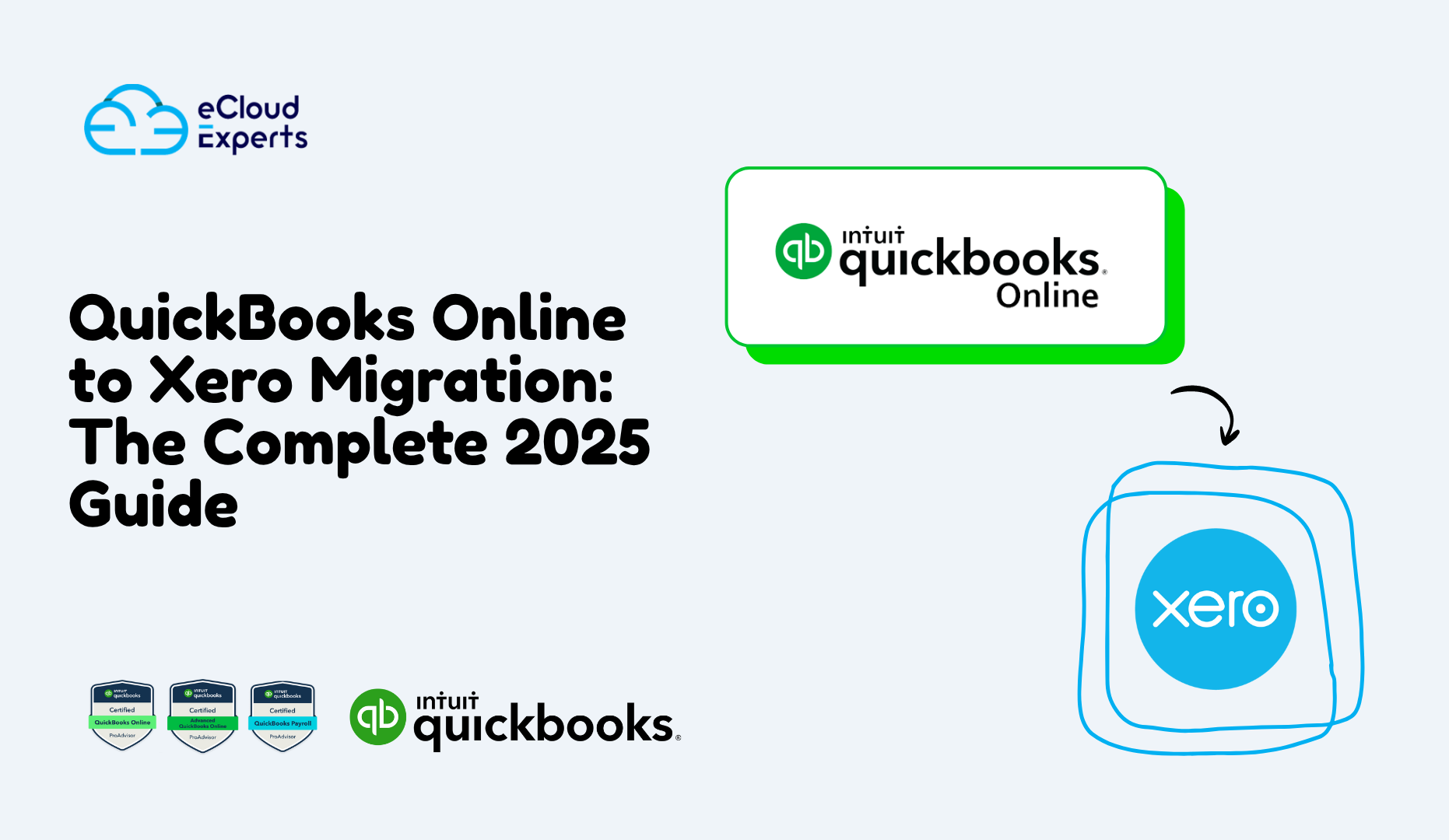Tired of manual bookkeeping killing your e-commerce hustle? Switching to Xero is one of the best moves a small business can make in today’s fast-paced digital economy. Xero’s a cloud-based favorite, especially for sellers who aren’t accountants. It’s user-friendly, with a clean dashboard and mobile app to manage finances on the go. It’s modern, cloud-based, and tailor-made for business owners who want clarity and control over their finances without the stress. But let’s be honest: the idea of migrating your accounts from a legacy system can feel overwhelming.That’s where this Xero migration checklist comes in.
As cloud accounting experts who’ve helped hundreds of businesses migrate to Xero successfully, we at eCloud Experts know what works and what can go wrong. This guide breaks the process down step-by-step, using real-world insights and simple language to help you migrate with confidence.
Why Small Businesses Are Moving to Xero
Before we dive into the checklist, let’s talk about why so many small businesses are making the move.
Integrated payroll for simplified management
As a business owner, managing payroll is always a priority but it can also be one of the most tedious tasks. Xero simplifies this by integrating payroll directly into the platform. From calculating wages and deductions to submitting tax filings, Xero streamlines the entire payroll process, ensuring it’s done right every time
Recently I have been working on a case related to this. The client has the Xero system but hasn’t been using its payroll functionality. Their company processes payments by having the accountant calculate everything on a spreadsheet and then send it to the owner, who transfers the money via the bank. We are now helping them set up the system step by step and correcting previous errors.
Flexibility with mobile access
For busy entrepreneurs, Xero offers exceptional flexibility. It allows you to manage your finances seamlessly, whether you’re travelling for business or managing multiple projects remotely.The app’s mobile access is invaluable, particularly in today’s dynamic work environment, where remote work and hybrid models are becoming increasingly common. Xero ensures you can stay productive and in control of your finances no matter where you are.
Scalability for Growing Businesses: A Key Factor in the Xero Migration Checklist
One of the main concerns for clients when choosing financial software is whether it could grow alongside their business. Xero addresses this with its scalable features that adapt to businesses of any size. Whether you’re launching a startup or managing a well-established enterprise, Xero offers flexible pricing plans and add-ons, allowing you to grow without outgrowing the platform.
Xero is more than just accounting software—it’s a comprehensive solution for managing all aspects of your business’s finances. From automating routine tasks to offering powerful insights and flexible tools, Xero makes financial management simpler and more efficient. Whether you’re a small startup or an established business, Xero’s scalability, global reach, and collaborative features make it the ideal choice. And with a 30-day free trial, there’s no reason not to give it a try.
But to get the most out of Xero, your migration must be done right—with minimal disruption and maximum accuracy. That’s where a Xero Migration Checklist becomes essential. It ensures every step is handled properly, from data cleanup and backup to setting up your chart of accounts and training your team.
Step by Step Xero Migration Checklist
1. Assess Your Current Accounting System
Migration isn’t just about moving data, it’s about cleaning house.
Ask yourself:
- What software are you currently using (e.g., QuickBooks Desktop, Sage, Excel)?
- Are there any recurring issues or bottlenecks?
- How clean is your data (outdated suppliers, duplicate contacts, etc.)?
Pro tip: This is a golden opportunity to leave messy data behind. Clean up contact lists, unpaid invoices, and unnecessary accounts before migrating.
2. Map Out a Realistic Migration Timeline – Xero Migration Checklist
Migrating to Xero isn’t something you want to rush—especially during peak business periods like end-of-month or tax season.
Best practices:
- Pick a go-live date (ideally, the start of a new month or financial quarter).
- Allocate time for each stage: backup, conversion, testing, training.
- Set internal deadlines and responsibilities.
This is a great time to loop in your accountant or bookkeeper or better yet, a with Xero Migration Checklist.
3. Backup All Your Data
You wouldn’t go on a long journey without packing a map, right? Same goes for your financial data.
Before you migrate:
- Export all reports (Trial Balance, P&L, Balance Sheet).
- Save customer/supplier lists.
- Download bank statements and reconciliations.
Even if you don’t need to reference them later, having a secure backup gives peace of mind.
4. Choose Your Migration Approach
There are two main ways to migrate:
a. DIY with Xero’s tools
If you’re tech-savvy and your accounts are simple, Xero offers tools to import CSVs and map data manually.
b. Partner-led migration
If your business has multiple accounts, payroll, or years of historical data, we strongly recommend working with an expert.
5. Xero Migration Checklist: Migrate Key Financial Data
What should you bring into Xero?
- Chart of Accounts
- Opening Balances
- Contacts (Customers & Suppliers)
- Outstanding Invoices & Bills
- Bank Transactions
- Payroll data (if applicable)
6. Test, Verify, and Tweak
Once your data is in Xero, it’s time to double-check everything.
- Reconcile opening balances
- Match bank feeds with your statements
- Check aged receivables/payables reports
- Test invoice templates and payment gateways
Common hiccup: Bank feed issues. Make sure your accounts are linking properly and pulling the correct data.
7. Train Your Team (and Yourself!)
Even the best cloud accounting platform won’t help if your team doesn’t know how to use it.
Provide short, focused training on:
- Creating and sending invoices
- Reconciling bank transactions
- Generating reports
- Tracking expenses or projects
- Managing payroll, if included
At eCloud Experts, we tailor sessions for small business owners, finance teams, and admin staff to ensure everyone feels confident on Day 1.
Common Cloud Accounting Migration Challenges
Incomplete data mapping
Imagine unpacking at your new office and realizing none of the boxes are labeled. That’s what a migration feels like when your data isn’t mapped correctly.
Mapping means making sure your data from your old system lands in the right places in Xero—like matching your old “Sales Revenue” account to the correct one in your new chart.
Trying to import “everything”
Yes, it’s tempting to want your entire accounting history in Xero.
But here’s the thing: not all of it needs to come along.
We’ve seen clients try to bring in 10+ years of transactions, thousands of archived suppliers, and every old invoice—only to end up with a cluttered, slow system they struggle to manage.
Think of it like moving house. Do you really need those VHS tapes from 2004? Or every invoice from a customer who stopped ordering in 2016?
Wrong timing (e.g., mid-year migration)
Timing your migration poorly can turn a smooth switch into a logistical mess.
One of the most common mistakes? Migrating mid-month or worse—mid-financial year—without a clear plan.
Underestimating training needs
You could have the most beautifully migrated data in the world—but if your team doesn’t know how to use Xero, you’re back at square one.
Many businesses assume, “We’ll figure it out as we go.” But that usually results in:
Confusion over where things are, delayed invoicing or missed payments, or team members using workarounds that create errors.
That’s why proper training and a Xero Migration Checklist are essential—not just for a smooth technical transition, but for making sure your team is confident and capable from day one.
The good news? These are all avoidable with the right planning and a bit of expert help.
Final Thoughts: Let’s Make It Easy Together
Migrating to Xero is more than a software upgrade. It’s a strategic shift toward smarter, simpler accounting. With the right support, you can streamline your financial processes, gain real-time insights, and free up time to focus on growing your business.
Whether you’re moving from Excel, QuickBooks, Sage, or another platform, following this Xero migration checklist will set you up for success.
At eCloud Experts, we specialize in cloud accounting migration not just the technical side, but the human side too. We know what small businesses need, and we’re here to make your transition seamless.
Ready to migrate to Xero with confidence? Start with our Xero Migration Checklist…
In 2025, modern accounting practices powered by Xero are the key to staying competitive, and eCloud Experts’ consultancy is the bridge to that future. From seamless migrations and comprehensive training to ongoing support and strategic guidance, their services empower your firm to enhance efficiency, ensure compliance, and deliver exceptional client value. Don’t let outdated methods hold you back—partner with a leader in cloud accounting solutions.
Take the first step today by contacting eCloud Experts at +44 0203 488 6202 or info@ecloud-experts.com to schedule a free consultation. Located at Rourke House, Watermans Business Park, The Causeway, Staines-Upon-Thames, Surrey, England, TW18 3BA, their team is ready to tailor a solution for your firm.Contact eCloud Experts today for a free consultation or tailored training session. Whether you’re just starting to explore cloud accounting or need help mid-migration, our friendly team is here to help no jargon, just results.

